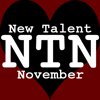
 Jimmy the Stick is the first novel from film writer Michael Mayo. It’s a cracking debut set in America during prohibition and the author makes full use of that era to bring us an exciting tale of gangsters and smuggling. Real life characters like Arnold Rothstein and Lucky Luciano even make appearances alongside the fictional ones like Jimmy ‘the Stick’ Quinn. We reviewed Jimmy the Stick a few days ago and as this is Michael Mayo’s first crime novel, we invited him to be a part of New Talent November…
Jimmy the Stick is the first novel from film writer Michael Mayo. It’s a cracking debut set in America during prohibition and the author makes full use of that era to bring us an exciting tale of gangsters and smuggling. Real life characters like Arnold Rothstein and Lucky Luciano even make appearances alongside the fictional ones like Jimmy ‘the Stick’ Quinn. We reviewed Jimmy the Stick a few days ago and as this is Michael Mayo’s first crime novel, we invited him to be a part of New Talent November…
Tell us a little bit about Jimmy the Stick...
The short description is historical noir. The present of the novel is March, 1932, in New York and New Jersey with frequent flashbacks to earlier decades. Much of the action takes place in the Pennyweight mansion with hidden rooms and such, so there’s a Gothic element, too. As readers, we tend to separate noir and Gothic, but they do overlap in some areas.
What prompted you to write this novel?
The first ideas for the book came while I was working on American Murder: Criminals, Crime and the Media. At the time, I lived in New Jersey, close to New York City. As I learned more about the city’s role in the beginnings of organised crime and visited some of the places I was writing about, the whole subject became more real on an individual level. It wasn’t history. There was the Park Central Hotel where Arnold Rothstein was shot. And just down the street from the Chelsea Hotel was the address where Mad Dog Coll was machinegunned. It’s a pet supply store now, and there aren’t any phone booths in the back, but still, that’s where it happened. That’s when I got the idea of writing about those times from the point of view of somebody who was there.
The setting is the prohibition era, and the plot weaves in the Linderbergh kidnapping. Why did you make this choice?
The 20s and 30s are perhaps the most fertile ground any writer could choose to work in. So many of the things that shaped the world today were beginning then – mass communications with telephones, movies, radio and magazines; air travel; affordable automobiles; women moving into the workplace and demanding equality; the dizzying rise of the stock market and the crash, and Prohibition itself which turned millions of otherwise law-abiding citizens into criminals. It all makes a novelist’s job that much easier because you don’t have to make things up. It all really happened.
The Lindbergh kidnapping shocked the world to a degree that’s comparable only to the sinking of the Titanic. In 1932, Charles Lindbergh was arguably the most famous man on the planet, and the idea that his son could be stolen like that was unthinkable. Perhaps that’s why conspiracists still float nutty theories about Bruno Hauptmann’s innocence. Anyone who’s interested should take a look at Jim Fisher’s excellent non-fiction novel The Lindbergh Case.
The real life gangsters in your book were iconic figures, and have inspired many classic movies. As a film expert yourself, did any of these inspire you?
The screen portrayals of those guys usually tell you more about the times when the films were made than about the real people. That’s completely understandable, given the restrictions that the movie business worked under during the reign of the Hays Office, roughly 1922-1968. And you’ve got to remember that guys like Luciano loved the spotlight and was constantly polishing his image, making the truth of him hard to find. Lansky, on the other hand, never wanted to see his name in the papers. That’s why they worked so well together.
The movies that helped me most were the ones that were made in New York. DW Griffiths’ The Musketeers of Pig Alley (1912), sometimes called the first gangster film, has some great moments that show what the streets really looked like. And Harold Lloyd’s Speedy (1928), still a wonderful comedy, has some grand chases actually filmed in traffic. That’s where you begin to get the feel of the streets and sidewalks and linch counters and bars.
Jimmy the Stick is such a nuanced character. How did you marry his ruthless criminal side and his sympathetic side?
Basically, Jimmy is every short guy I ever knew who refused to let that be the thing that defined him. Jimmy can’t get away from it, either, but in most situations his cane, knucks and .38 even things up. Or so he hopes. From a more practical point of view, as a writer, I tried to keep two fictional characters in mind. The first is Lawrence Sanders’ Archy McNally. I love the relaxed personable voice that Sanders created for him. Even if you don’t care about what’s going on in those books, Archy is such an engaging narrator that you can enjoy the ride. I want Jimmy to have the same relationship with the reader. The second character is Walter Mosley’s Mouse, first introduced to an unsuspecting world in Devil in a Blue Dress. Jimmy isn’t quite as quick to shoot inconvenient people, but whenever I found myself struggling with the story, I’d ask myself, ‘What would Mouse do?’ and the answer usually came to me.
What are your upcoming projects?
It’s unlucky to talk about work in progress but I have started on a second book. It’s set in New York, a few months after the end of this one with important action a few years earlier. It involves the numbers racket, more gangsters real and fictional, and a dangerous woman. And I should admit up front that I have stolen the plot. It’s a good one that has been used at least twice before. I hope to do it justice.







